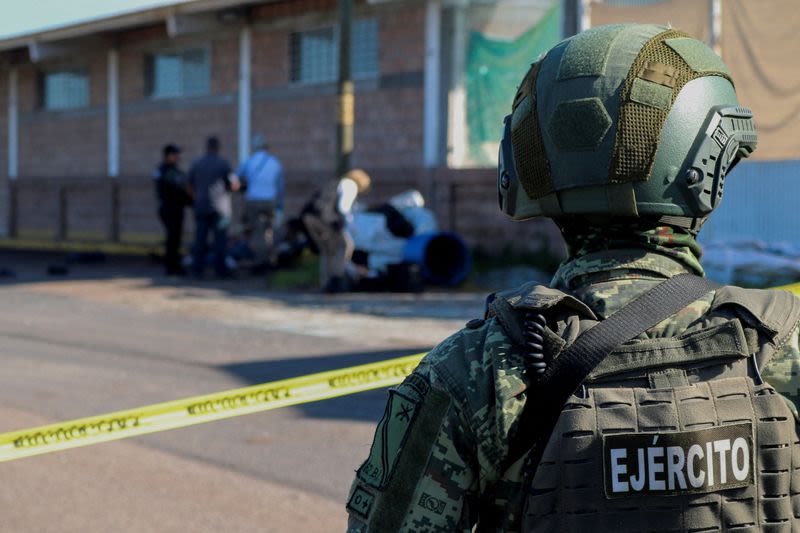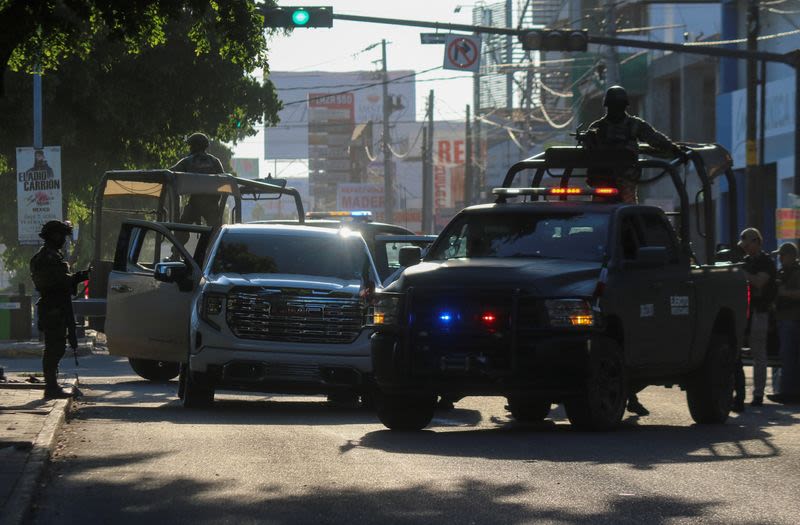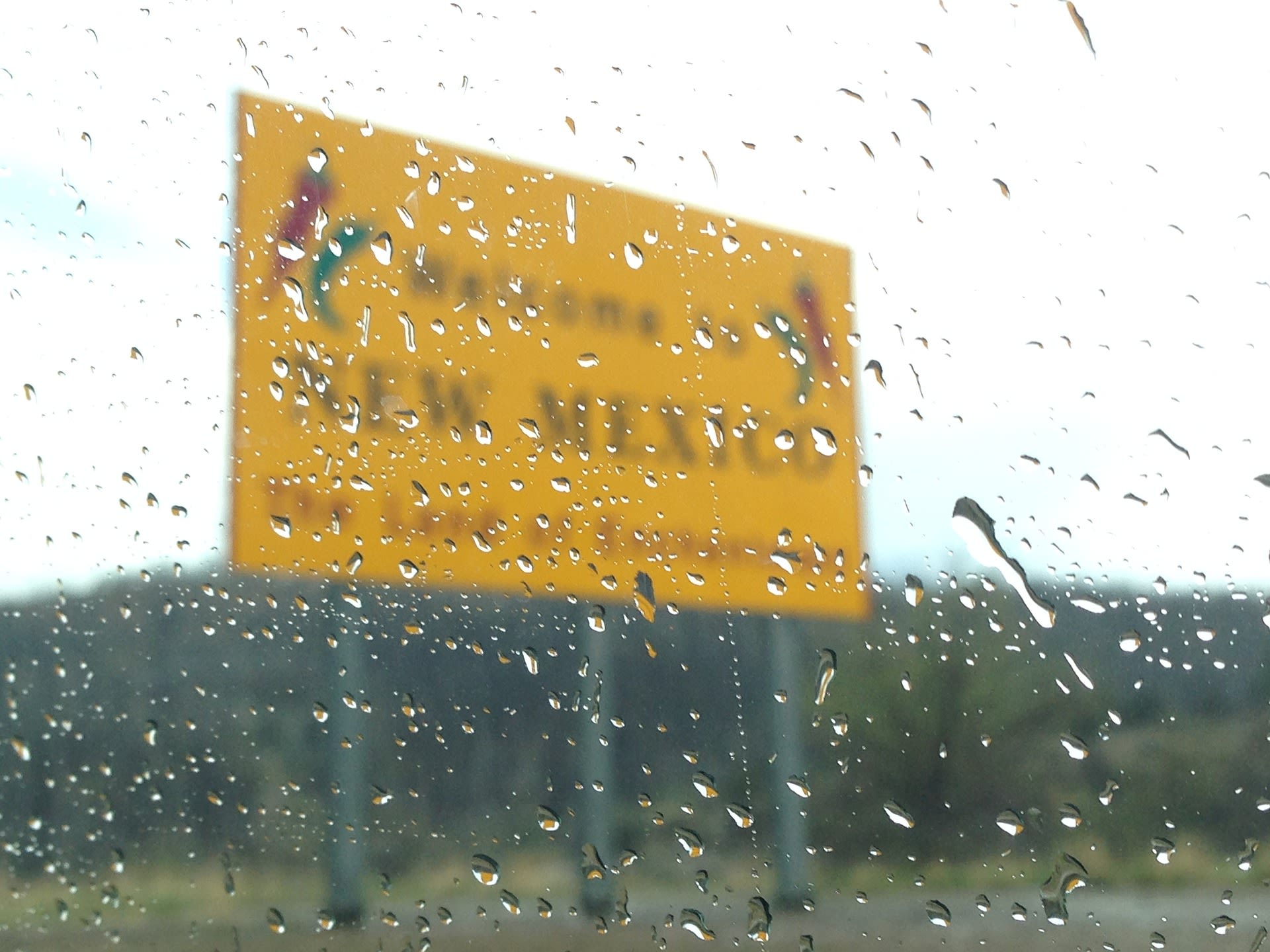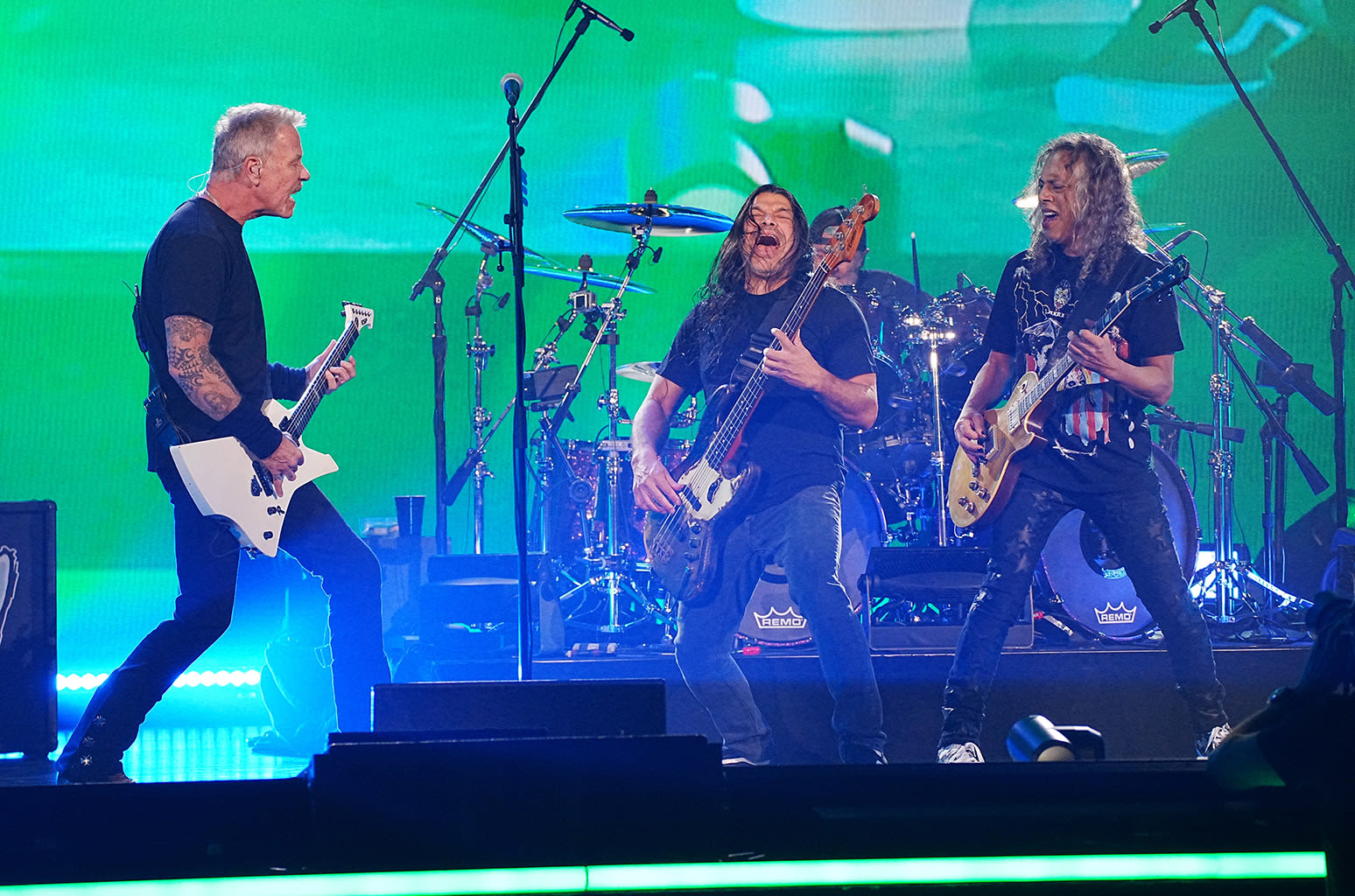Search results
News about tropical disturbance, NHC, tropical development
News about US, Sinaloa Cartel, violence
News about China, New Mexico, Social Security
Also in the news
Mexico is a constitutional republic comprising 31 states and Mexico City, its capital and largest city, which is among the world's most populous metropolitan areas.
- Demographics of Mexico
With a population of about 129 million in 2022, [4] Mexico...
- Coat of Arms
The coat of arms of Mexico (Spanish: Escudo Nacional de...
- President of Mexico
The president of Mexico (Spanish: Presidente de México),...
- Languages of Mexico
The Constitution of Mexico does not declare an official...
- Mexico City
Mexico City (Spanish: Ciudad de México, [b] [11] locally...
- Economy of Mexico
The economy of Mexico is a developing mixed-market economy....
- Mexican Drug War
The Mexican drug war (also known as the Mexican war on...
- Name of Mexico
Antique map of New Spain also called Mexico, 1708. Anahuac...
- Flag
The national flag of Mexico (Spanish: Bandera de México) is...
- History of Mexico
The history of Mexico spans more than three millennia,...
- Demographics of Mexico
México es una república representativa, democrática, federal y laica; compuesta por Estados libres y soberanos (y estos por Municipios) en todo lo concerniente a su régimen interior, y por la Ciudad de México (capital del país); unidos en una federación establecida según los principios de su Constitución.
The history of Mexico spans more than three millennia, beginning with the early settlement over 13,000 years ago. Central and southern Mexico, known as Mesoamerica, saw the rise of complex civilizations that developed glyphic writing systems, recording political histories and conquests.
- Overview
- Land
Mexico, country of southern North America and the third largest country in Latin America, after Brazil and Argentina. Mexican society is characterized by extremes of wealth and poverty, with a limited middle class wedged between an elite cadre of landowners and investors on the one hand and masses of rural and urban poor on the other. But in spite of the challenges it faces as a developing country, Mexico is one of the chief economic and political forces in Latin America. It has a dynamic industrial base, vast mineral resources, a wide-ranging service sector, and the world’s largest population of Spanish speakers—about two and a half times that of Spain or Colombia. As its official name suggests, the Estados Unidos Mexicanos (United Mexican States) incorporates 31 socially and physically diverse states and the Federal District.
More than half of the Mexican people live in the centre of the country, whereas vast areas of the arid north and the tropical south are sparsely settled. Migrants from impoverished rural areas have poured into Mexico’s cities, and nearly four-fifths of Mexicans now live in urban areas. Mexico City, the capital, is one of the most populous cities and metropolitan areas in the world. Mexico has experienced a series of economic booms leading to periods of impressive social gains, followed by busts, with significant declines in living standards for the middle and lower classes. The country remains economically fragile despite the forging of stronger ties with the United States and Canada through the North American Free Trade Agreement (NAFTA).
Mexico’s urban growing pains are in sharp counterpoint to the traditional lifestyles that prevail in more-isolated rural areas. In states such as Oaxaca or Chiapas, small communal villages remain where indigenous peasants live much as their ancestors did. The cultural remnants of great pre-Columbian civilizations, such as Teotihuacán or the Mayan pyramids at Chichén Itzá and Tulum, provide a contrast to colonial towns such as Taxco or Querétaro. In turn, these towns appear as historical relics when compared with the modern metropolis of Mexico City. Yet even the bustling capital city, which has been continually built and rebuilt on the rubble of past civilizations, reveals Mexico’s wide range of social, economic, and cultural struggles. As the renowned Mexican poet and intellectual Octavio Paz observed,
Past epochs never vanish completely, and blood still drips from all their wounds, even the most ancient. Sometimes the most remote or hostile beliefs and feelings are found together in one city or one soul, or are superimposed like [pre-Columbian] pyramids that almost always conceal others.
It is this tremendous cultural and economic diversity, distributed over an enormously complex and varied physical environment, that gives Mexico its unique character.
Britannica Quiz
Sharing a common border throughout its northern extent with the United States, Mexico is bounded to the west and south by the Pacific Ocean, to the east by the Gulf of Mexico and the Caribbean Sea, and to the southeast by Guatemala and Belize. Mexico also administers such islands and archipelagoes as the Tres Marías in the Pacific and Cozumel and Mujeres off the coast of the Yucatán Peninsula. Including these insular territories, the roughly triangular country covers an area about three times the size of Texas. While it is more than 1,850 miles (3,000 km) across from northwest to southeast, its width varies from less than 135 miles (217 km) at the Isthmus of Tehuantepec to more than 1,200 miles (1,900 km) in the north.
Special offer for students! Check out our special academic rate and excel this spring semester!
Mexico is between the Pacific Ocean and the Gulf of Mexico. People living in Mexico or who are from there are called Mexicans. Most Mexicans speak Spanish as their native language.
Mexico City (Spanish: Ciudad de México, [b] [11] locally [sjuˈða(ð) ðe ˈmexiko] ⓘ; abbr.: CDMX; Central Nahuatl: Mexihco Hueyaltepetl, [12] Nahuatl pronunciation: [meːˈʃiʔko wejaːlˈtepeːt͡ɬ]; [13] Otomi: 'Monda) is the capital and largest city of Mexico, and the most populous city in North America.
People also ask
Is Mexico a country?
What is the history of Mexico?
When did Mexico City become a city?
When was Mexico City renamed?
Sep 9, 2024 · note 1: strategic location on southern border of the US; Mexico is one of the countries along the Ring of Fire, a belt of active volcanoes and earthquake epicenters bordering the Pacific Ocean; up to 90% of the world's earthquakes and some 75% of the world's volcanoes occur within the Ring of Fire.








